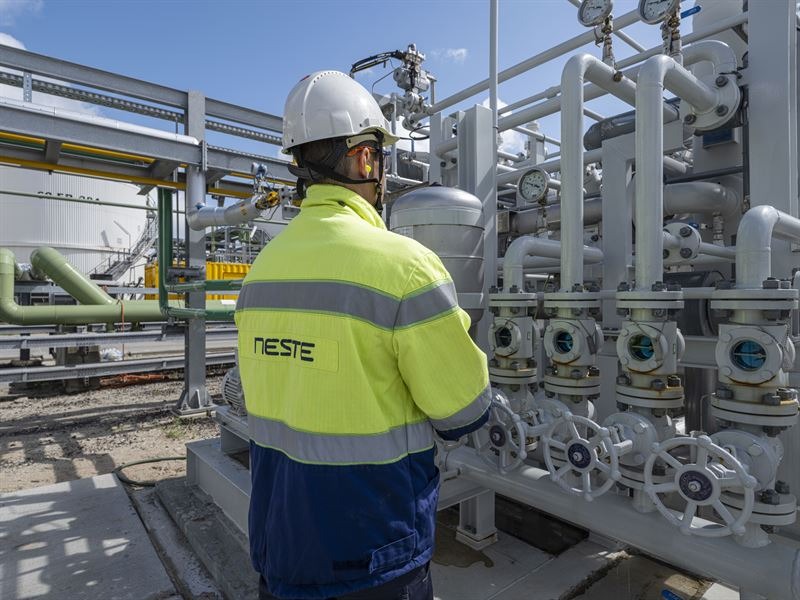A key milestone has been reached in the European energy transition as the pioneering MultiPLHY project successfully started up the world’s largest multi-megawatt high-temperature electrolyzer (HTE) within an industrial refining environment at Neste’s renewable products refinery in Rotterdam.
The project consortium, comprising industry and research leaders Neste, Sunfire, CEA, and ENGIE, with equipment supplied by SMS group, has successfully reached this critical phase. The demonstration aims to prove the viability of using renewable hydrogen to replace the fossil hydrogen currently utilized in the refining industry—a crucial step for reducing the sector’s greenhouse gas (GHG) emissions.
Technology and Efficiency
The core technology is a 2.6 MW Solid Oxide Electrolysis Cell (SOEC) system, provided by the German manufacturer Sunfire.
- High Efficiency: Operating at high temperatures, around , the SOEC technology utilizes waste heat from the refinery process. This utilization of heat means the electrolyzer requires significantly less electricity to produce hydrogen compared to other technologies on the market, resulting in unrivaled efficiency.
- Production Capacity: The system, which consists of twelve electrolysis modules, is designed to produce more than 60 kg of renewable hydrogen per hour.
- Next Steps: With the successful startup, the consortium will now begin a rigorous test program to validate the technology’s performance characteristics and ensure industrial readiness.
Roles of the Consortium Partners
The MultiPLHY project showcases collaboration across the entire value chain:
This project has received funding from the Clean Hydrogen Partnership, highlighting its importance for advancing the European electrolyzer industry.


